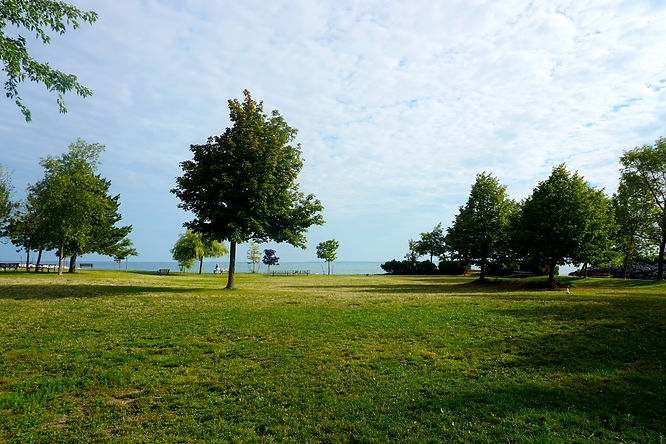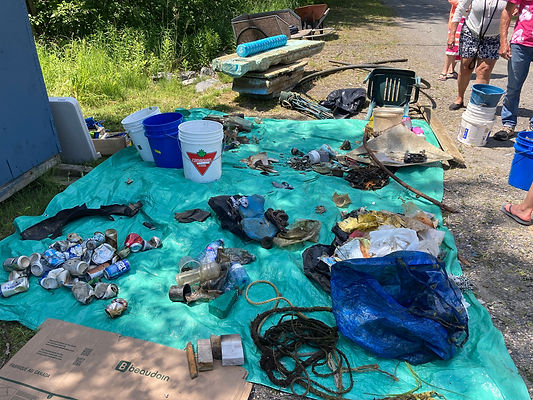
Shoreline Cleanups
Stopping Litter and Macroplastics from Becoming Microplastics in Georgian Bay Water
With the generous help of volunteers, we hosted 61 shoreline cleanups in the southeast Georgian Bay area during the summer of 2023. During those events, approximately 1,025 pounds of litter was collected from the shores. Imagine what Georgian Bay beaches would look like without these efforts made possible by our donors, and you'll know why this work is necessary.
Further to the importance of cleaning our beach areas, this work diverts the plastic pollution from entering the lake, where it will inevitably break down over the course of centuries, continuously spreading microplastic
particles and degrading the health of the water.


Left, a beach with no active cleanup services; Right, Sunset point in Collingwood where we host weekly shoreline cleanups




These are a few of our "trash treasures", perfect examples of how long most litter takes to biodegrade, and of course, in many instances the litter doesn't biodegrade at all.
While the most common litter on our shores is cigarette butts and single-use plastics, we have also found decades-old cups, cans, bags, and even electronics in the water and between rocks on shore.

Links to articles about plastic pollution
Thank you to these funders who have made this program possible.
This project was undertaken with the financial support of the Government of Canada through the federal Department of Environment and Climate Change.
Ce projet a été realisé avec l’appui financier du gouvernement du Canada agissant par l’entremise du ministère fédéral de l’Environnement et du Changement climatique.
Charles H. Ivey Foundation
Hodgson Family Foundation
JP Bickell Foundation
The LeVan Family
Lush Fresh Handmade Cosmetics
Great Lakes Local Action Fund
The Weston Family Foundation
Georgian Bay Forever donors
We also want to thank these valuable partners:
The Town of Collingwood
The Nottawasaga Valley Conservation Authority
Blue Mountain Watershed Trust
University of Toronto Trash Team

